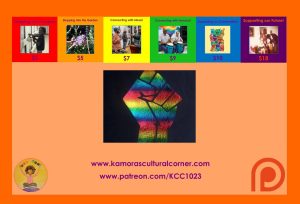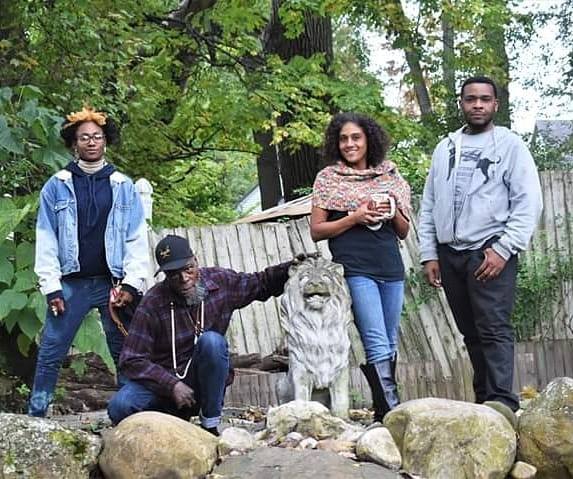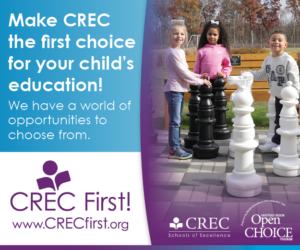In the midst of the COVID-19 pandemic and ongoing quarantine, it’s a given that so many of our beloved small businesses, organizations and artists are making transitions to the Internet. But just how is that transition going? Our friends at Kamora’s Cultural Corner have used the quarantine as an opportunity to try online crowdfunding through the social media site Patreon. The KCC’s typical programming, which includes lessons, workshops, open mic nights, and consultations, can still bring art and beauty to Connecticut’s local arts communities–we all just have to be a little creative in unconventional circumstances!
We spoke with the KCC’s very own Kamora Harrington about the role of artists and the efficacy of crowdfunding. You can find the KCC at kamorasculturalcorner.com and on Patreon–every donation, no matter how small, counts!
CT VOICE: In times like these, it’s often productive and reassuring to turn to art. Why do you feel Connecticut’s art communities remain important in the midst of the COVID-19 pandemic?
KCC: I come from a family of artists, and my mother is a poet. My mother says that creating art is “telling truth through lies.” That’s a beautiful quote, and it’s something humans need to do. We’re not always aware of it. We need to grapple with the hard truths of life in order to go forward. When we look at these truths head on, sometimes it can be too much at once. But when we use art as a lens, art can carry us through.
I love all the different artists we have at KCC. In some ways, we’ve forgotten the important role the artist class plays in society. Artists help us move forward and bring diverse perspectives to the mainstream—especially when it comes to the perspectives and experiences of marginalized communities. When we don’t listen to artists, our world is a gray world, and we can’t imagine or fantasize or grow.
CT VOICE: The consequences of the pandemic, and the imminent recession, will be experienced particularly brutally by our local arts communities. What consequences are you most worried about for Connecticut’s art scene, and for our queer artists especially?
KCC: Homelessness. There are two young queer artists at the KCC, whom I love dearly, and both of whom make beautiful art. At the moment both of their housing situations are tenuous—homelessness is a couple weeks away. In the short term more broadly, COVID-19 is going to hurt a lot of our artists. A lot of us have had our commissions cancelled. A lot of us are struggling to transition our private classes onto the Internet, or otherwise they’ll lose the classes.
Artists are going to find new ways to get funding, but—and this is a big BUT—in the future, the art we’ll be producing is the art that we believe in. Not just the art that will attract funding. Something I really care about is the relationship between artists and the nonprofit industry, and how nonprofits can limit the potential of artists who want to produce progressive work. There is one artist at the KCC, and she does fabulous, amazing large-scale work, and a nonprofit approached her to paint a mural. But the project itself didn’t give her enough space to express her artistic vision; the organization had a very clear message they wanted to get across, and there wasn’t enough room for her creativity. She had to decide: do I take the paycheck or do I stick to my integrity? Of course, COVID-19 put her decision on hold indefinitely—but I hope we can use this time to figure out how to eliminate these false choices.
CT VOICE: We at CT Voice are very enthusiastic about KCC’s Patreon mutual aid efforts for the pandemic. Would you please break down for our readers just how it works? How much money does each of us contribute, and how exactly is KCC distributing it?
KCC: From our current monthly donations, $20 goes to the seven members of the KCC’s core team. Then, we gave $20 to the two aforementioned artists, too. Going forward we’ll be contributing our donations directly to the Patreon accounts of artists we support. We’re in the process of reaching out to artists who already have Patreons, as well as reaching out to artists who are considering starting Patreons. And we want to be fully transparent and accountable with how we are distributing the Patreon money as the months progress.
Up until now, the KCC has functioned as a collective of wonderful, avant-garde artists who come to us with their art, and we provide them a physical venue. But with the quarantine, the physical venue has been taken away for the meantime. So right now we’re learning what we can and can’t do online, what works and what doesn’t. Last month, for instance, we brought our open poetry mics night online, and we’re conducting them remotely. You can donate to the KCC’s Patreon, of course, but the poets will also provide their CashApps and PayPals so that you can donate to them directly. The Patreon is really cool, but our priority is to get money into the hands of our artists as efficiently as possible.
We don’t require our artists to write grant proposals detailing how they’ll be spending their donation money, to prove they’re doing the right and wonderful thing. If they spend the money on their rent, great. If they spend it on food, great. If they spend it on painting supplies, great. But here is the thing: we don’t make them provide the receipts. We at the KCC feel it’s our job to support the artists we believe in—not to hover over them and impede their process. Right now, the most important thing is to sustain our artists.
QR: I’m curious to hear about KCC’s experience with mutual aid and crowdfunding in the past. How do you feel about the efficacy of online crowdfunding? Are marginalized artists uniquely benefitted by crowdfunding and mutual aid?
KCC: Marginalized artists are not always represented well by people and organizations outside of our communities. Figuring out grant writing, for instance—so much of it is flagellating yourself as destitute and impoverished, telling a sad story. That works sometimes, but with mutual aid, marginalized artists have the option to tell their own stories. They can interface directly with their own communities.
I came out in the late 80s, and I’m queer as the day as long. I’m always thinking about those drag queens who taught us a whole lot in the midst of the AIDS crisis. We had no money in our communities, and the government laughed at our plight. So we learned how to keep each other afloat. Part of that was drag queens performing and raising money, and the money going to our people. We cared for ourselves, and our activists looked like us.
All of the KCC’s ideas that people tell me are so great—they’re not really my ideas. They’ve been done by queer people before me. And they’re not always reflected in the operations of LGBT companies and nonprofits. After the AIDS crisis, we started to gain legitimacy, but that legitimacy was conditioned on a “right way to be gay.” Some of our community, most of whom were white gay men, wanted to show America that we were normal and respectable, and that meant throwing our drag queens under the bus. Screw anyone who thinks it’s all about being normal—we need to figure out how to bring back the beauty and brilliance of queer culture.
QR: Under the quarantine, we LGBT folks have to find new, creative ways to maintain and sustain our communities. For our readers, what do you believe are the first steps in doing this?
KCC: Subscribe to our Patreon and check out our open mics, of course. In this period of social distancing, take this time to learn about your history and our culture, learn about the lives of our queer forebearers. We have differences in our community, but we all bring unique gifts to the table. This is a terrifying time, and I’m very scared—but I’m also excited to see how we rise in the face of COVID-19. Now is the time to work together.










More Stories
Off-Broadway Review: Trophy Boys
Broadway Preview: Lewis Flinn’s Cabaret
Off-Broadway Revew: The Imaginary Invalid